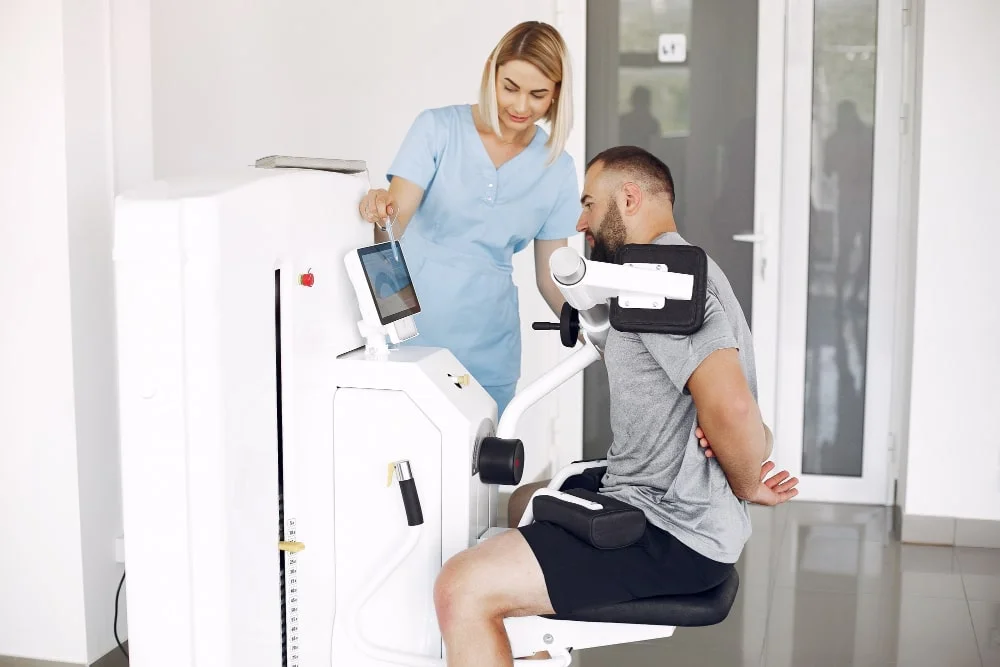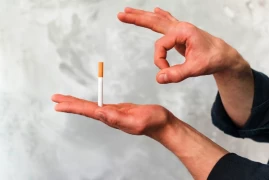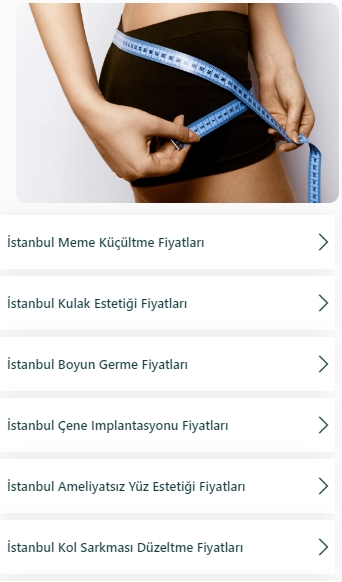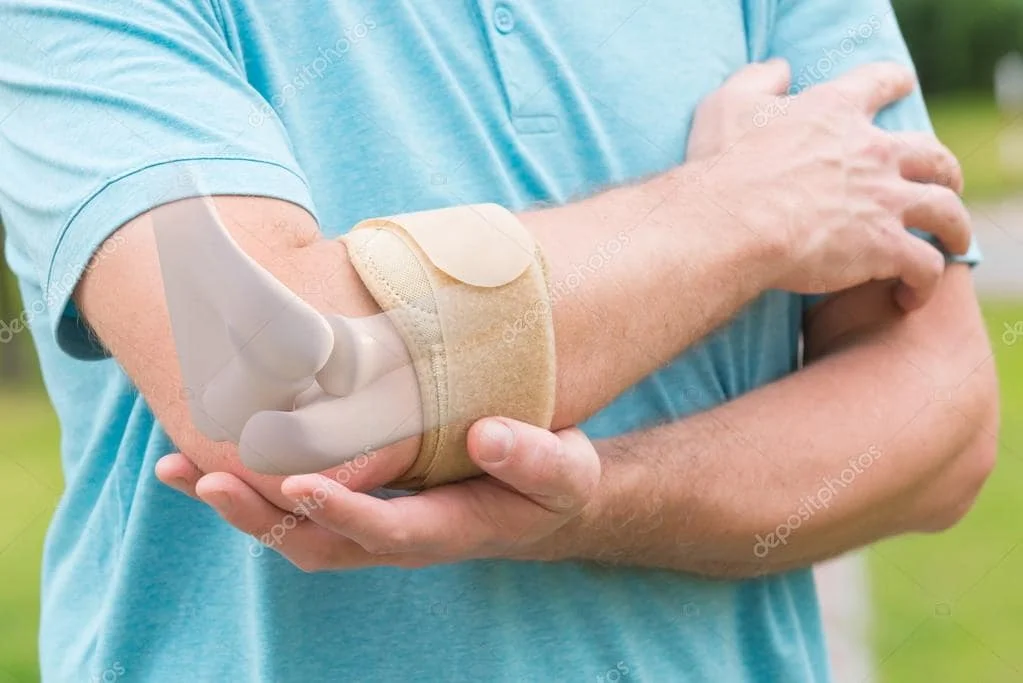
Tennis Elbow: Does It Cause Weakness in the Fingers and Hands?
- Tennis Elbow: Does It Cause Weakness in the Fingers and Hands?
Throughout my professional career, lateral epicondylitis—commonly known as tennis elbow—has been one of the leading clinical conditions affecting patients’ quality of life and requiring a patient and persistent treatment process. Although it may appear to be a simple musculoskeletal issue, a detailed evaluation is essential due to the underlying mechanisms and variability in treatment response.
Causes
Tennis elbow occurs as a result of repetitive strain on the forearm extensor muscles, leading to microtears and degeneration in the tendons located on the outer part of the elbow.
Some common causes include:
- Intensive use of the wrist and elbow (e.g., carpentry, cleaning, prolonged keyboard and mouse use)
- Repetitive gripping or twisting motions
- Incorrect sports techniques (especially in racquet sports)
- Poor ergonomic conditions
- Decreased tendon elasticity with aging
Symptoms
Patients' clinical descriptions are often key in diagnosing the condition.
Common symptoms I frequently encounter include:
- Tenderness and pain on the outer side of the elbow
- A sense of weakness during gripping
- Difficulty performing daily activities such as shaking hands or opening doors
- Pain or aching that radiates, particularly to the fingers
- In some cases, numbness and tingling in the hands and fingers (especially if nerve structures are involved)
These complaints of numbness and weakness may be related to the median or radial nerves. Therefore, a careful evaluation is required, and, if necessary, electrophysiological tests should be conducted.
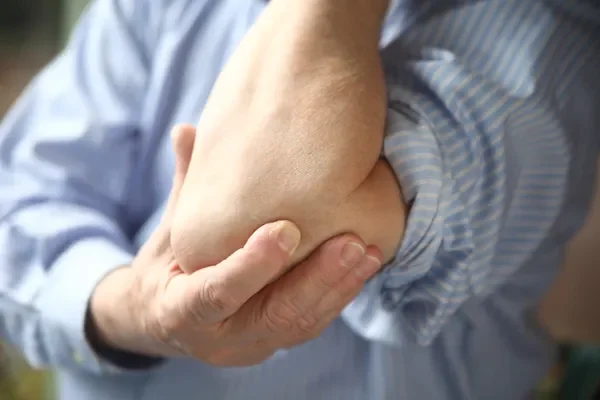
Treatment Methods
The treatment process should be tailored to the individual’s symptom severity, activity level, and structural characteristics. In my own clinical practice, the following methods have proven effective:
- ESWT (Extracorporeal Shock Wave Therapy): High-frequency sound waves are applied to the affected tendon area to stimulate cellular repair. It has pain-reducing and anti-inflammatory effects.
- PRP (Platelet-Rich Plasma): A plasma rich in platelets, derived from the patient’s own blood, is injected into the damaged tissue. It supports tissue regeneration and is particularly promising in chronic cases.
- Osteopathic Manual Therapy: This holistic approach evaluates the body as a whole, aiming to reduce tension in the muscle and fascia systems and regulate circulation. Biomechanical issues in the neck, shoulder, and nerve pathways are also addressed.
- Epicondylitis Brace: A special elastic bandage applied around the elbow reduces stress on the tendon, helping to alleviate pain and improve comfort during daily activities.
- Splint Application: During nighttime use or acute pain phases, splints that stabilize the wrist and elbow help rest the area and support tendon healing by preventing microtraumas.
- Exercise and Rehabilitation: Stretching and strengthening exercises reduce tendon load. Individualized physiotherapy programs are applied to restore functional capacity.
- Ergonomic Adjustments: The patient’s workspace and daily routines are reviewed to identify risky habits. Recommendations are made for optimal sitting positions, keyboard heights, and rest intervals.
Post-Treatment Period
After treatment for tennis elbow, the vast majority of patients report significant pain relief and functional improvement. However, this period is just as important as the active treatment phase. This is when the risk of recurrence is minimized, gains are consolidated, and muscle-tendon balance is maintained.
Key considerations during the post-treatment period include:
- Gradual Return to Activity: Load on the elbow should not be increased suddenly; daily tasks should be reintroduced gradually.
- Continuity of Exercises: The stretching and strengthening exercises learned with a physiotherapist must be continued regularly. Maintaining balance in the forearm muscles is especially important.
- Reinforcement of Ergonomic Habits: Preventative measures related to key risk factors like keyboard and mouse use or workstation setup should become permanent habits.
- Psychological Support and Patience: In patients with a history of chronic pain, psychological factors can influence the post-treatment period. Morale and motivation can directly impact recovery.
- Follow-Up Appointments: The recovery process should be monitored under expert supervision, and short-term supportive treatment periods can be planned if necessary.
Sometimes, a partial return of pain may be observed. In such cases, short-term physiotherapy and lifestyle adjustments often help regain control.
Conclusion
Tennis elbow can usually be managed with early diagnosis, appropriate treatment, and patient compliance. However, it is a process that requires patience and consistency. Our goal is not only to reduce pain but also to restore function and improve the individual’s quality of life.
Every patient is unique; thus, treatment should not be standardized but rather personalized. In rehabilitation, empathy is as important as science.

Dr. Elif Berber, PhD
Specialist in Physical Medicine and Rehabilitation

